Inventory
The Inventory panel in Autodesk Tandem displays a list of assets based on the filter selection. What that means is that users can view assets in a spreadsheet view based on classification, assembly code, Revit category, or other applicable asset properties.
Navigating the Inventory Panel
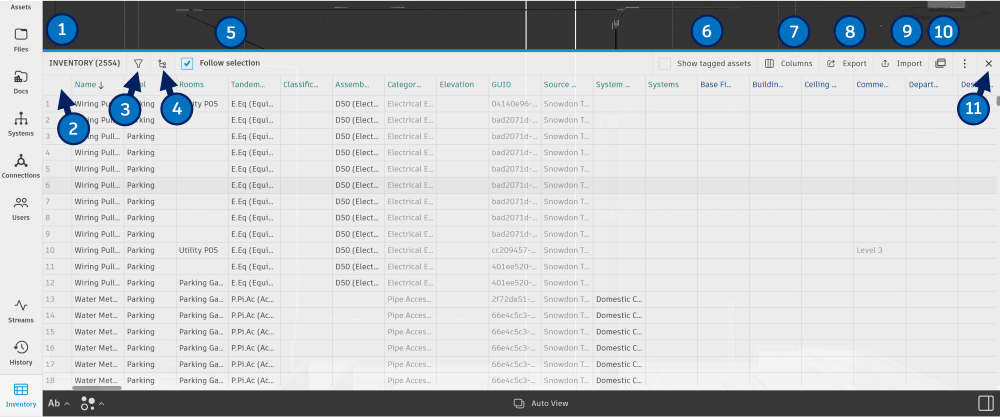
| Key | Description |
|---|---|
| 1 | The blueline across the top highlights that the size of the Inventory Panel can be adjusted to need and preference. |
| 2 | Select All – Just like Microsoft Excel, clicking the square to the left of the Name column selects the entire inventory. |
| 3 | Filter Rows – Filter the inventory panel by select a field (column/parameter), select the condition, and then entering a value. Click + Add Condition to have multiple filters applied. |
| 4 | Group Rows – Group rows by available parameters to consolidate the Inventory Panel and view data hierarchically. |
| 5 | Follow Selection – Double-clicking on an asset in the inventory panel, will prompt the viewer to zoom in and highlight the asset. |
| 6 | Show Tagged Assets – Of the total assets listed in the filter panel, turning this on will show users the list of tagged assets. |
| 7 | Columns – Open the Edit Column window to add or remove desired asset data to be viewed. |
| 8 | Export – Export what is listed, to a .csv or .xlsx file. You can name the export if desired. |
| 9 | Import – After Exporting, if changes were made to the export, this is where users can import the file back in. |
| 10 | Open in New Window – This is where users can detach the inventory panel so it is in a separate window from Tandem. All features remain and interact with the product. |
| 11 | Close the Inventory Panel |
Configuring the Inventory Panel
The flexibility of the Inventory panel allows each user to customize their experience. Opening the Edit Column window (number seven in the picture above), users can search for available asset data to add to their view or remove unwanted asset data. They can also arrange the selected columns in any desired order. Click update, and the panel will refresh with the updated selected asset data.
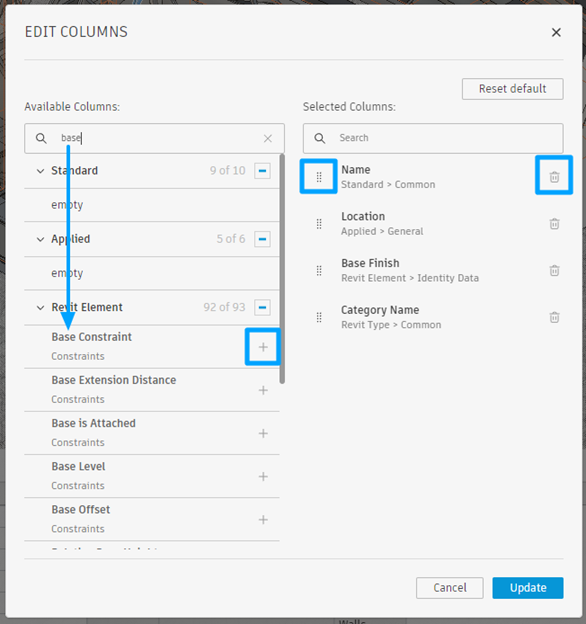
Now, some cells are dark gray, and others are lighter. The cells that are light grey can be edited and updated. The cells that are darker gray cannot be edited. For entirely gray columns, these are Revit Properties that can only be edited in the authoring model.
The column headers are color-coded, as seen in the picture below. Standard and Applied parameters (Tandem parameters) are the first two columns, the Revit Element properties are blue, and Revit Type properties are green.
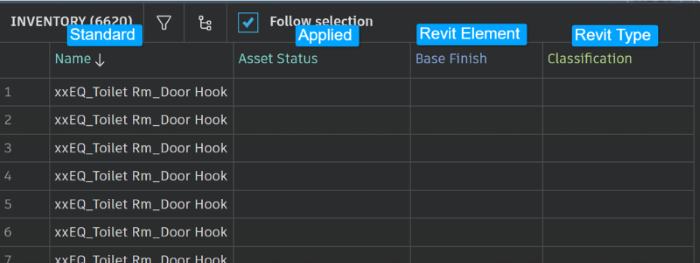
Another way to organize columns is to click and hold a column header to drag and reorganize them. Users can also hover the cursor between the columns, click and hold to adjust the column's size.
Filtering and the Inventory Panel
There are two different ways to filter the Inventory Panel. With the Filter Panel and the Inventory Panel open, selecting and removing filters in the filter panel will change the list of assets.
With the desired list of assets now selected, users can open the data filters (number three from the first picture), to apply one or multiple filters. Filtering directly in the Inventory does not change any selections in the Filter Panel; these operate separately.
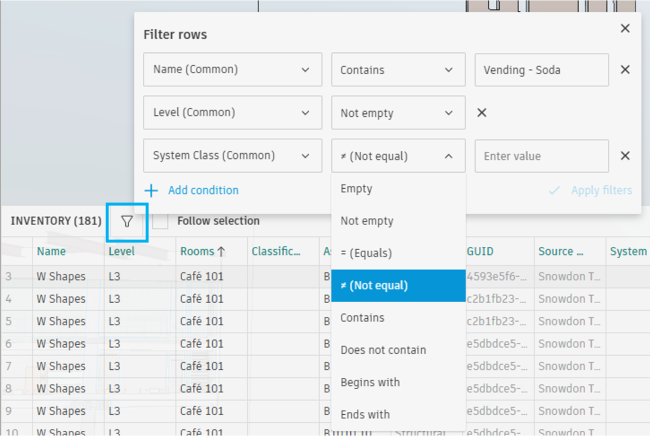
Grouping
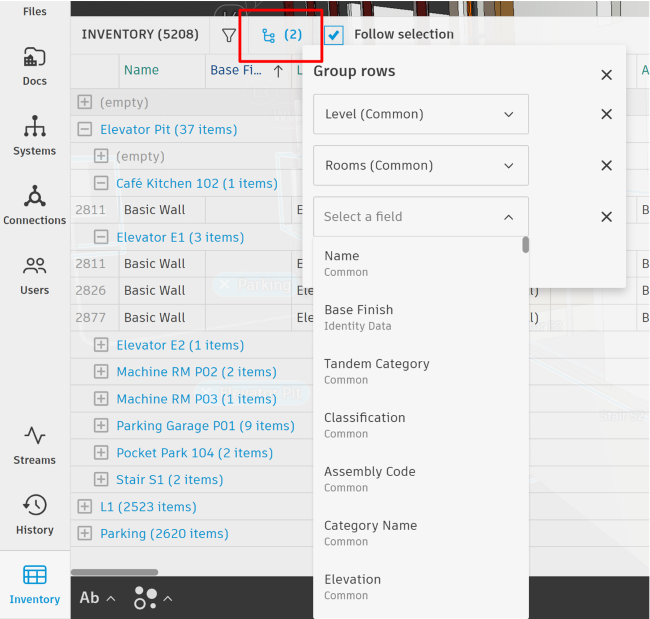
Users can now group rows by multiple parameters up to three. Users can view applied groupings hierarchically, deciding the parent-child structure. Looking at the picture above, we have grouped the inventory panel by Level and then by Room.
Adding/Updating Asset Data
There are multiple ways to add asset data to the twin via the Inventory Panel.
First, there is manual entry. Users can click on a light gray cell and manually enter information about an element or asset. Following that, users can select multiple cells in a single column, right click, and a dropdown menu will appear with the following options.

- Copy column value to all rows – Autofill the all the cells in the columns.
- Clear cell value
- Auto-fit columns – This will adjust all the column sizes in the panel so that all the data is displayed and not hidden due to the column's width being too small.
- Group by this column – This will group the list in the Inventory panel.
The next method is to add asset data using the Export and Import functions. Export the Inventory panel, open the file, make the desired changes, save the file, and import the file back. Any changes made will be ingested by Tandem leaving unchanged data alone.
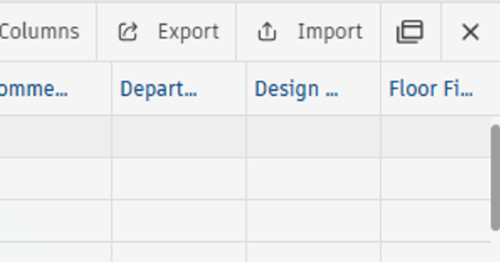
Pro-Tip: Learn how to merge levels in the Inventory Panel, by reviewing the Spaces Page.
